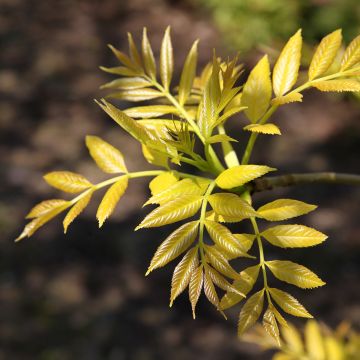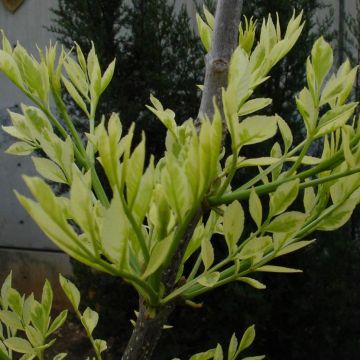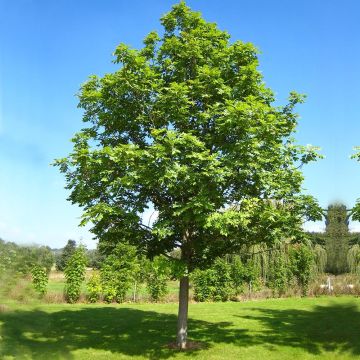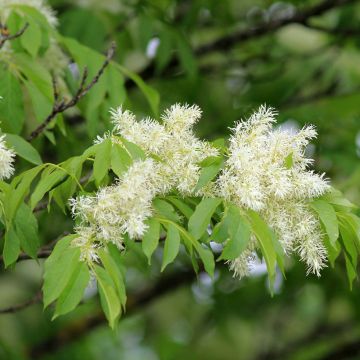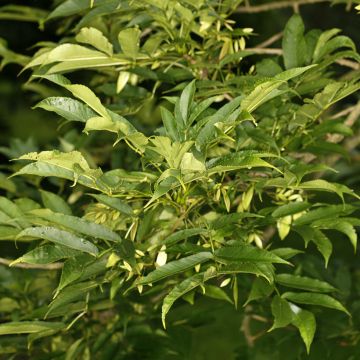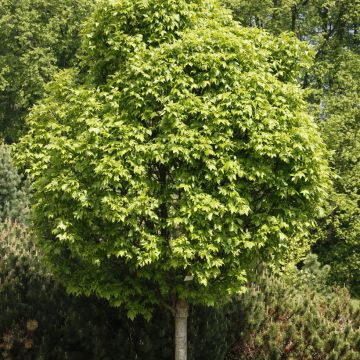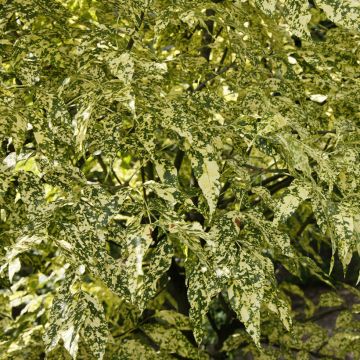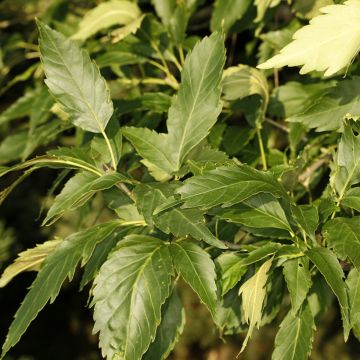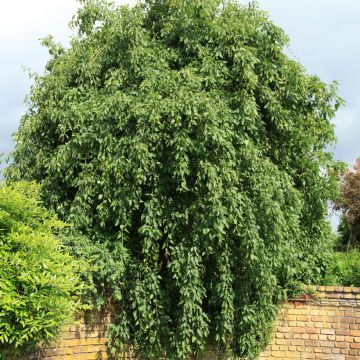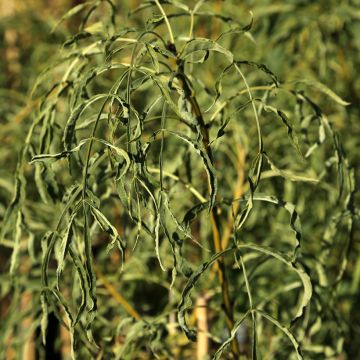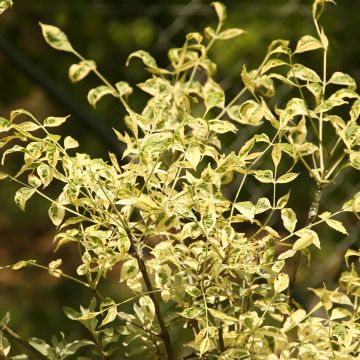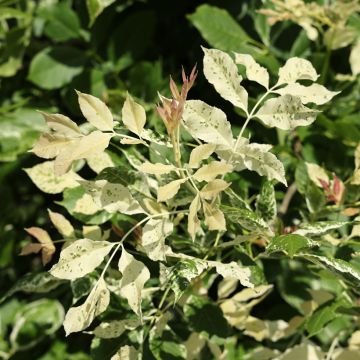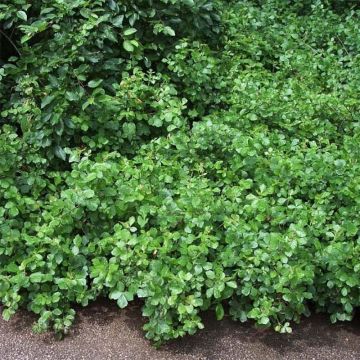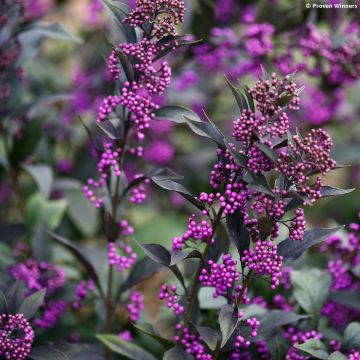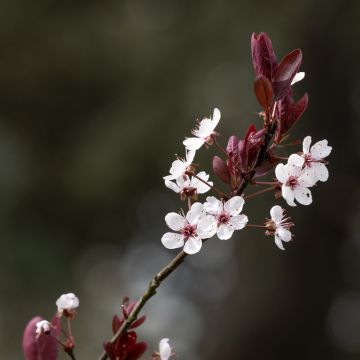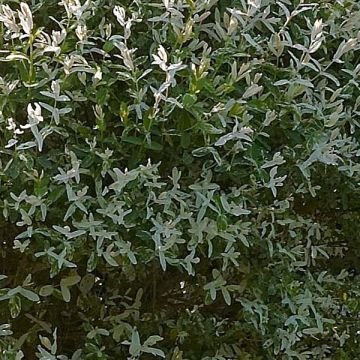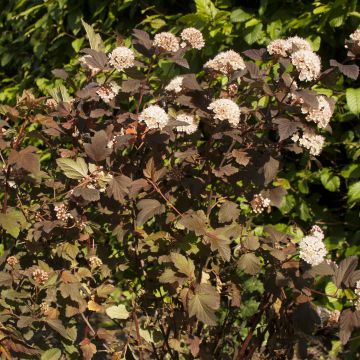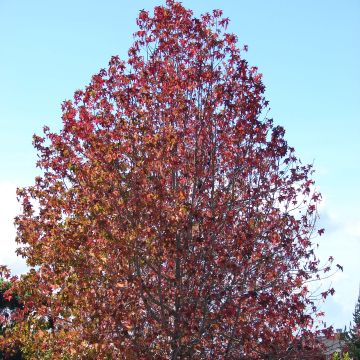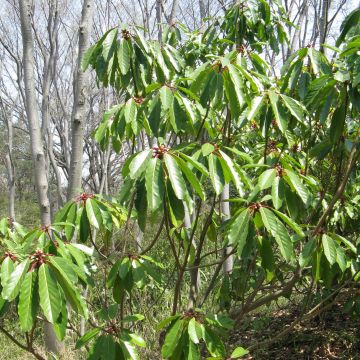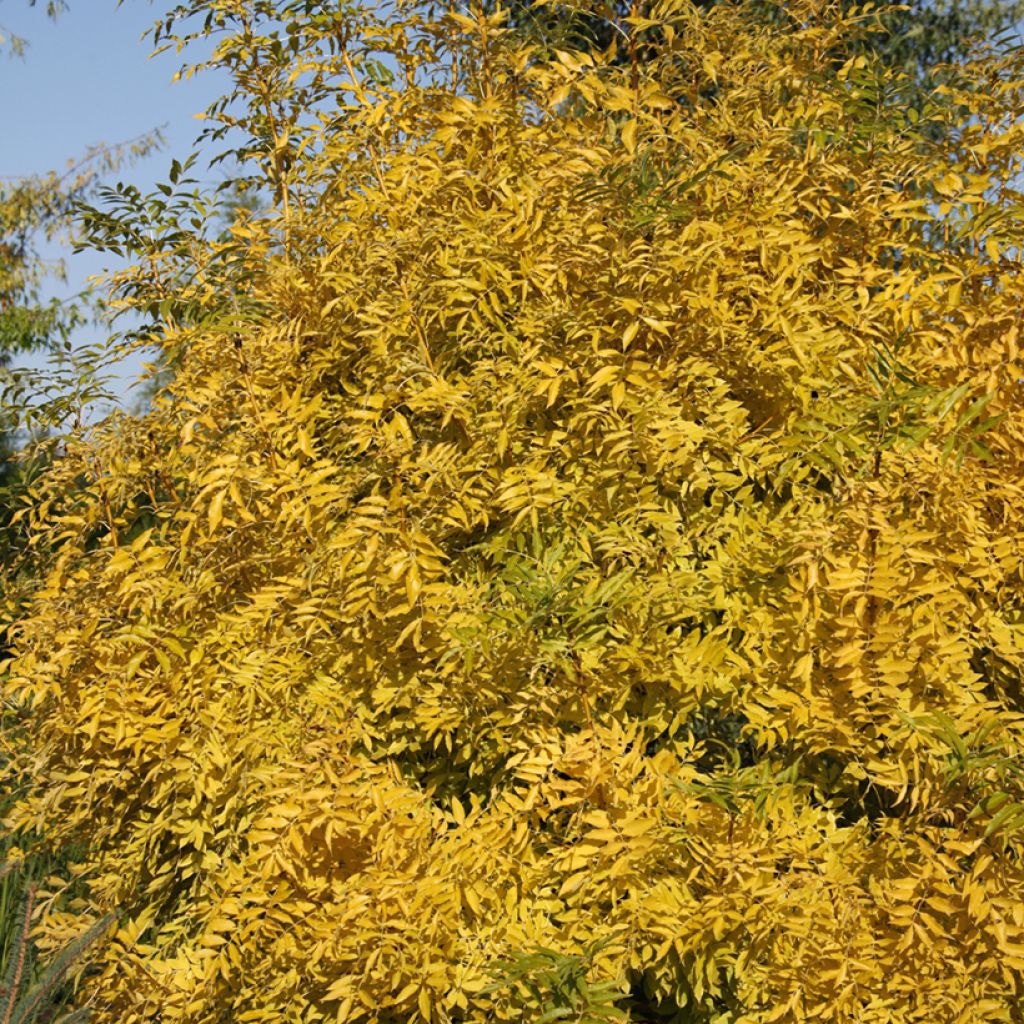

Fraxinus excelsior Allgold - Common Ash
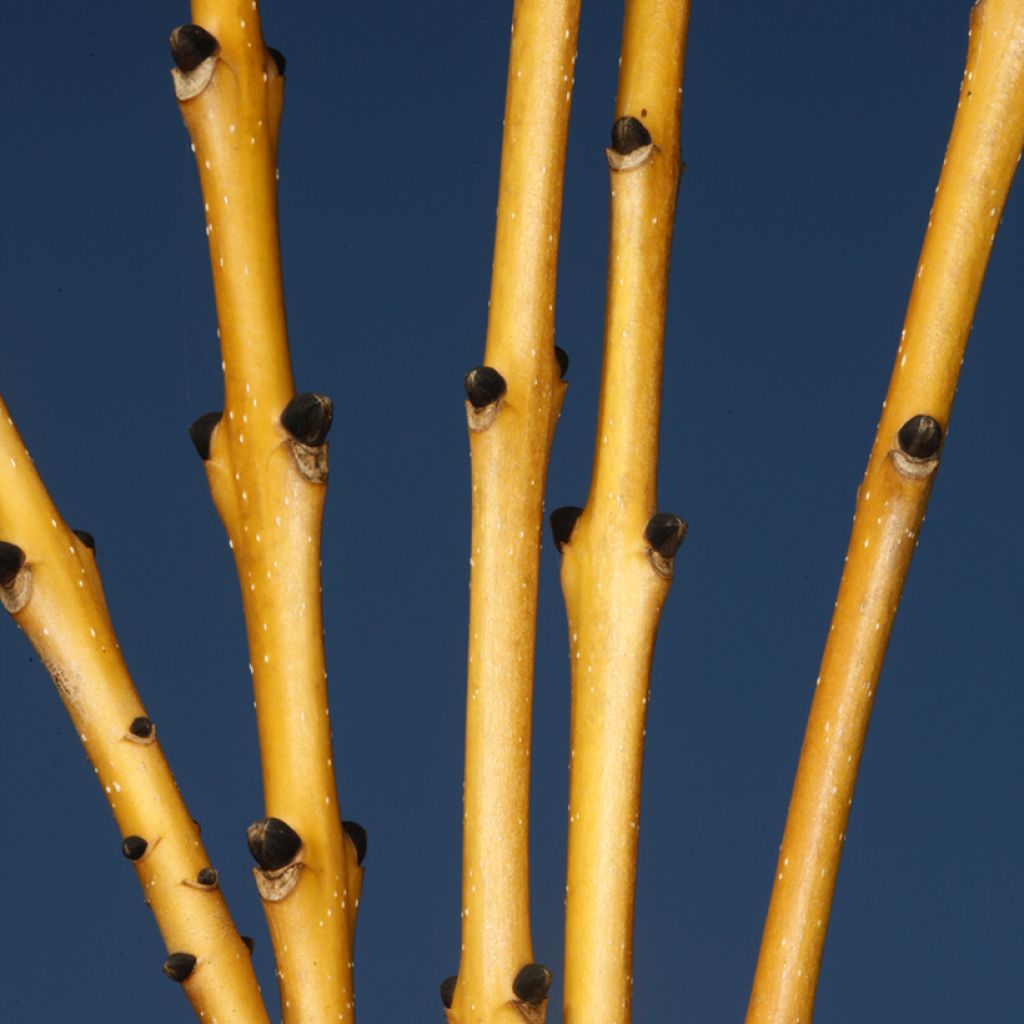

Fraxinus excelsior Allgold - Common Ash
Fraxinus excelsior Allgold - Common Ash
Fraxinus excelsior Allgold
Ash, European Ash, Common Ash
Special offer!
Receive a €20 voucher for any order over €90 (excluding delivery costs, credit notes, and plastic-free options)!
1- Add your favorite plants to your cart.
2- Once you have reached €90, confirm your order (you can even choose the delivery date!).
3- As soon as your order is shipped, you will receive an email containing your voucher code, valid for 3 months (90 days).
Your voucher is unique and can only be used once, for any order with a minimum value of €20, excluding delivery costs.
Can be combined with other current offers, non-divisible and non-refundable.
Why not try an alternative variety in stock?
View all →This plant carries a 24 months recovery warranty
More information
We guarantee the quality of our plants for a full growing cycle, and will replace at our expense any plant that fails to recover under normal climatic and planting conditions.
Does this plant fit my garden?
Set up your Plantfit profile →
Description
Fraxinus excelsior 'Allgold' is an attractive variety of Common Ash that immediately captivates with its magnificent golden yellow branches. This medium-sized tree forms a beautiful, regular spherical crown that gives it a well-balanced silhouette. Its leaves, composed of an odd number of leaflets, are light green during the growing season. In autumn, they take on beautiful yellow hues and persist on the tree for quite some time before falling to the ground. In winter, the original colour of the branches is even more striking, especially as the black buds create a superb contrast.
The Ash tree is a member of the Oleaceae family, which, in addition to the Olive tree (Olea) from which it gets its name, includes many ornamental plants, such as Lilac (Syringa), Jasmine, and the splendid White Fringe Tree or Chionanthus virginicus. Ash trees, of which there are about sixty-five species that are often closely related, have in common their (with rare exceptions) odd-pinnate leaves (composed of an odd number of leaflets, due to the terminal leaflet), generally opposite or sometimes grouped in threes. Fraxinus excelsior is the Common Ash, widespread from Europe to the Caucasus and as far as northern Anatolia. It grows rapidly and can exceed 30 m in height, and it can be found in lowland forests, valleys, and near lakes and watercourses. Its compound leaves, with 7 to 13 leaflets, measure 20 to 40 cm in length, and it produces a very discreet yellowish-green flowering before bud burst.
Fraxinus excelsior 'Allgold' is a variety which is more suitable for medium-sized gardens, as its growth is smaller than that of the species. In ten years of cultivation, it will reach a height of 4 to 6 m and, at maturity, will not exceed 15 m in height. It forms a conical to spherical, regular and balanced crown, giving it a beautiful presence. This beautiful tree is remarkable for the yellow colour of its branches, particularly intense at the tips, where the bark is young. In winter, when the wood is bare, its branching is particularly appreciated, as it brings light to the heart of a sometimes dull season. The almost black buds create a superb contrast on the golden yellow bark.
Foliage appears quite late in spring, as is often the case with Ash trees. The leaves are composed of 5 to 11 lanceolate leaflets with pointed tips, with an attractive pattern. They are light green in spring and turn a deep yellow in late summer and autumn, creating magnificent scenes when planted in beds. The leaves tend to stay on the tree for a long time, especially when autumn is sunny, which increases its ornamental interest. The autumn colours and the colour of the branches are even more pronounced if it is planted in full sun. 'Allgold' hardly flowers and is sterile, so it does not produce samaras (the name of the fruits) unlike the variety 'Jaspidea', which has a similar appearance.
The Common Ash 'Allgold' is a beautiful tree that is easy to grow in all fertile and moist soils. It is extremely hardy, tolerates windy conditions, is not very sensitive to de-icing salt, withstands paving above its root zone, and is suitable for the urban atmosphere of our city gardens. Plant it in beds, associating it with other woody plants with decorative bark to create a beautiful winter decor. The Tibetan Cherry, with its splendid shiny mahogany red bark, will be a perfect companion, as will its cousin Prunus maackii 'Amber Beauty', which dresses in orange amber and stands out visually with its light lenticels. Another autumn splendour is the Paperbark Maple, aptly named for its brown bark that exfoliates with age. In autumn, it will allow you to create an epic scene when its foliage turns red against the yellow of your Ash tree.
Report an error about the product description
Plant habit
Foliage
Safety measures
Botanical data
Fraxinus
excelsior
Allgold
Oleaceae
Ash, European Ash, Common Ash
Cultivar or hybrid
atteinterespiratoire
Cette plante peut entraîner des symptômes allergiques.
Evitez de la planter si vous ou vos proches souffrez de rhinite saisonnière ("rhume des foins").
Davantage d'informations sur https://plantes-risque.info
Other Fraxinus - Ash tree
View all →Planting and care
Plant your Fraxinus excelsior Allgold in autumn or spring, choose an open location, in non-scorching sun, where the soil is deep and keep in mind the space it will take in the long term. If necessary, create a drainage pit with stones if your soil is suffocating. If your soil is poor, adding leaf compost will be beneficial. Water regularly during the summer following planting and ensure it is protected from prolonged drought for another year, mulching can help keep the base moist and space out watering. It is important to keep in mind that this tree needs consistently moist soil, at least at depth. It is perfectly hardy. Pruning consists of balancing the habit of the tree every 3 years or so by opening up the centre of the canopy.
Planting period
Intended location
Care
Planting & care advice
This item has not been reviewed yet - be the first to leave a review about it.
Similar products
Haven't found what you were looking for?
Hardiness is the lowest winter temperature a plant can endure without suffering serious damage or even dying. However, hardiness is affected by location (a sheltered area, such as a patio), protection (winter cover) and soil type (hardiness is improved by well-drained soil).

Photo Sharing Terms & Conditions
In order to encourage gardeners to interact and share their experiences, Promesse de fleurs offers various media enabling content to be uploaded onto its Site - in particular via the ‘Photo sharing’ module.
The User agrees to refrain from:
- Posting any content that is illegal, prejudicial, insulting, racist, inciteful to hatred, revisionist, contrary to public decency, that infringes on privacy or on the privacy rights of third parties, in particular the publicity rights of persons and goods, intellectual property rights, or the right to privacy.
- Submitting content on behalf of a third party;
- Impersonate the identity of a third party and/or publish any personal information about a third party;
In general, the User undertakes to refrain from any unethical behaviour.
All Content (in particular text, comments, files, images, photos, videos, creative works, etc.), which may be subject to property or intellectual property rights, image or other private rights, shall remain the property of the User, subject to the limited rights granted by the terms of the licence granted by Promesse de fleurs as stated below. Users are at liberty to publish or not to publish such Content on the Site, notably via the ‘Photo Sharing’ facility, and accept that this Content shall be made public and freely accessible, notably on the Internet.
Users further acknowledge, undertake to have ,and guarantee that they hold all necessary rights and permissions to publish such material on the Site, in particular with regard to the legislation in force pertaining to any privacy, property, intellectual property, image, or contractual rights, or rights of any other nature. By publishing such Content on the Site, Users acknowledge accepting full liability as publishers of the Content within the meaning of the law, and grant Promesse de fleurs, free of charge, an inclusive, worldwide licence for the said Content for the entire duration of its publication, including all reproduction, representation, up/downloading, displaying, performing, transmission, and storage rights.
Users also grant permission for their name to be linked to the Content and accept that this link may not always be made available.
By engaging in posting material, Users consent to their Content becoming automatically accessible on the Internet, in particular on other sites and/or blogs and/or web pages of the Promesse de fleurs site, including in particular social pages and the Promesse de fleurs catalogue.
Users may secure the removal of entrusted content free of charge by issuing a simple request via our contact form.
The flowering period indicated on our website applies to countries and regions located in USDA zone 8 (France, the United Kingdom, Ireland, the Netherlands, etc.)
It will vary according to where you live:
- In zones 9 to 10 (Italy, Spain, Greece, etc.), flowering will occur about 2 to 4 weeks earlier.
- In zones 6 to 7 (Germany, Poland, Slovenia, and lower mountainous regions), flowering will be delayed by 2 to 3 weeks.
- In zone 5 (Central Europe, Scandinavia), blooming will be delayed by 3 to 5 weeks.
In temperate climates, pruning of spring-flowering shrubs (forsythia, spireas, etc.) should be done just after flowering.
Pruning of summer-flowering shrubs (Indian Lilac, Perovskia, etc.) can be done in winter or spring.
In cold regions as well as with frost-sensitive plants, avoid pruning too early when severe frosts may still occur.
The planting period indicated on our website applies to countries and regions located in USDA zone 8 (France, United Kingdom, Ireland, Netherlands).
It will vary according to where you live:
- In Mediterranean zones (Marseille, Madrid, Milan, etc.), autumn and winter are the best planting periods.
- In continental zones (Strasbourg, Munich, Vienna, etc.), delay planting by 2 to 3 weeks in spring and bring it forward by 2 to 4 weeks in autumn.
- In mountainous regions (the Alps, Pyrenees, Carpathians, etc.), it is best to plant in late spring (May-June) or late summer (August-September).
The harvesting period indicated on our website applies to countries and regions in USDA zone 8 (France, England, Ireland, the Netherlands).
In colder areas (Scandinavia, Poland, Austria...) fruit and vegetable harvests are likely to be delayed by 3-4 weeks.
In warmer areas (Italy, Spain, Greece, etc.), harvesting will probably take place earlier, depending on weather conditions.
The sowing periods indicated on our website apply to countries and regions within USDA Zone 8 (France, UK, Ireland, Netherlands).
In colder areas (Scandinavia, Poland, Austria...), delay any outdoor sowing by 3-4 weeks, or sow under glass.
In warmer climes (Italy, Spain, Greece, etc.), bring outdoor sowing forward by a few weeks.






























